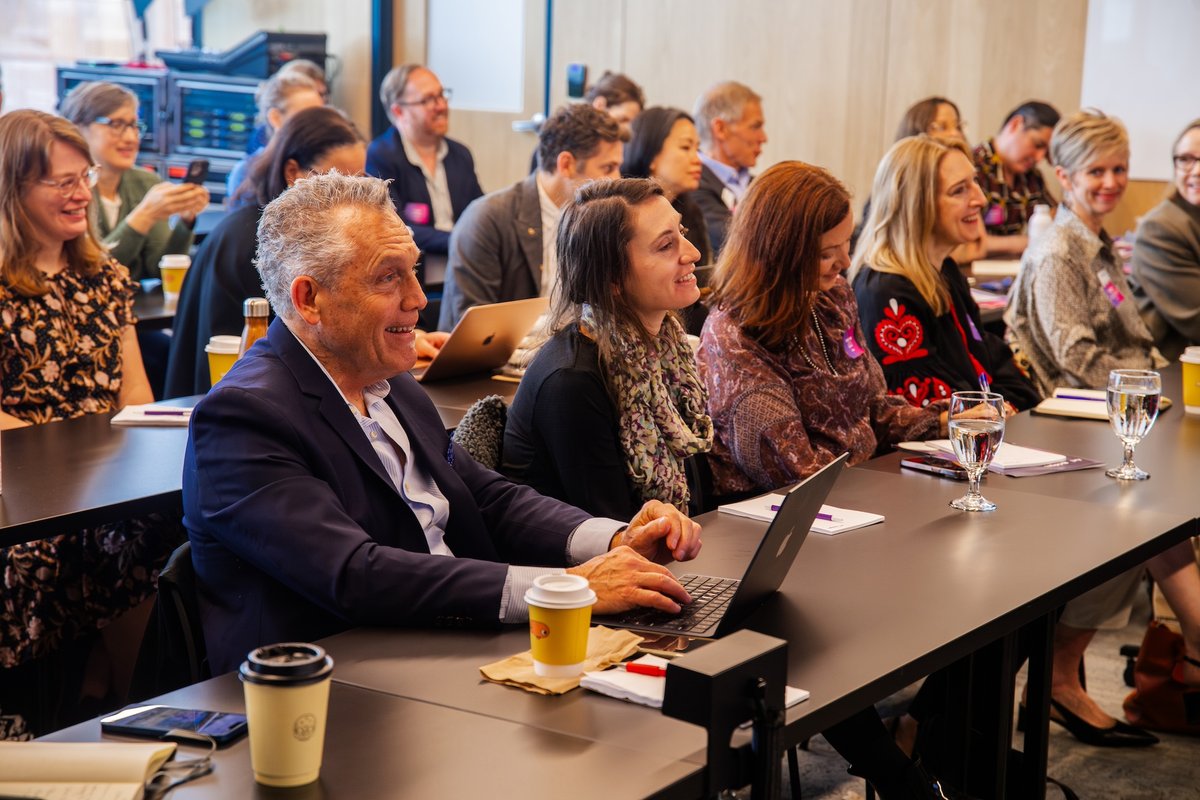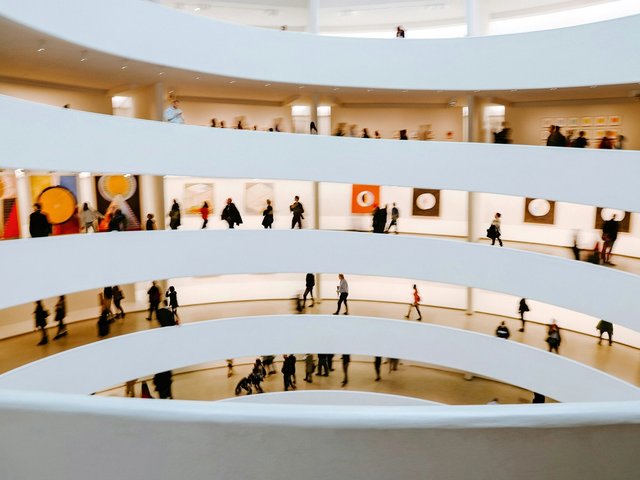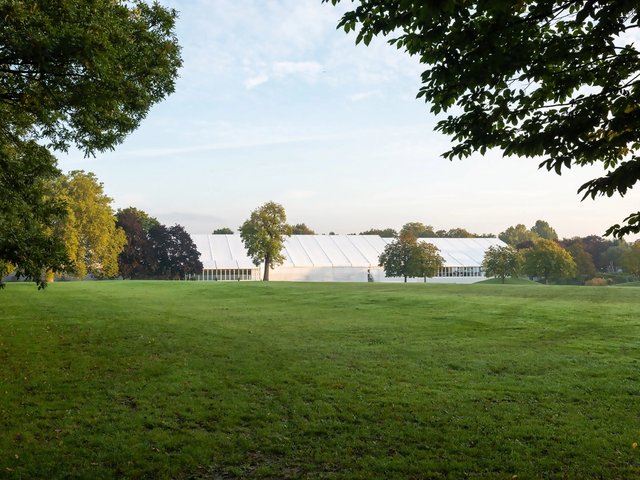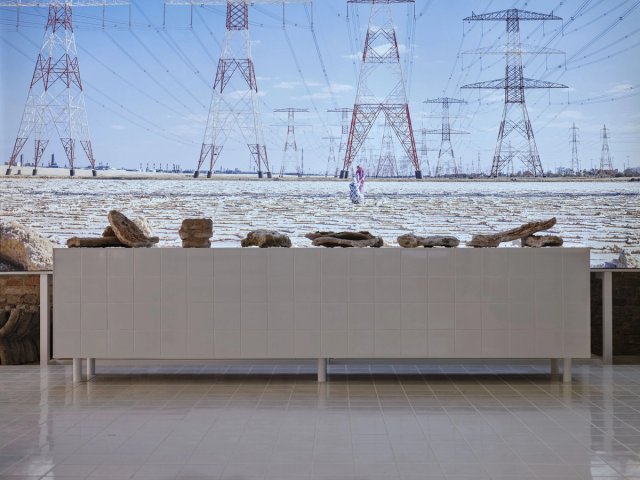In recent decades, the major risks that rising sea levels, massive flooding, wildfires and other severe weather pose to museums have been well documented. Organisations including the Gallery Climate Coalition are pushing the industry forward by encouraging institutions to select low emission vehicles for shipping art, prioritise energy efficiency in their buildings and pursue zero waste in the exhibition cycle. These are important strides, but fighting the impacts of climate change requires collective action. We must create a new set of norms that hold all of us accountable for museums’ sustainability.
As we look to change how museums operate, having conversations and sharing resources is critical. Recently, the Art Bridges Foundation held a convening with nearly 30 museum partners and strategic collaborators to discuss how our industry’s standards not only decrease access to art but also increase our carbon footprint. The goal was to think deeply about the role and responsibilities of museums to both our collections and communities while brainstorming alternative approaches to art management that emphasise sustainability and accessibility. We left with two simple and effective actions museums can implement right away.
The first action that museums can take is to relax climate standards in exhibition design from 70°F and 50% humidity to allow for more fluctuation, as recommended by the Bizot Green Protocol. Data from recent experiments reveal that most museum collections can operate well under a much wider climate condition. Relaxing standards also provides smaller organisations with less stable climate environments the opportunity to bring great works of art to their community, which is good for the environment and expands access to art to underserved areas.
Slow and steady reduces emissions
The other change museums can make to reduce their carbon footprints from exhibitions by 50% involves the model of bringing in traveling exhibitions developed by others for a fee—which includes the cost of crating, shipping and insurance. The harm to the environment created by traveling exhibitions has been widely discussed, from the Gallery Climate Coalition to the American Alliance of Museums. Common counterbalances include employing reusable or modular components, reducing the weight and volume of crates and using intermodal transport. These are all important factors that must be considered. What’s less frequently suggested is extending the amount of time an exhibition is on view—a programming shift that does not have the effect most would predict.
The typical length of a traveling exhibition is 12 weeks, and they often travel to six or more venues. Depending on how these exhibitions move across the country, that could translate to thousands of miles in shipping, often via airfreight or a semi-trailer truck. If museums extended the duration of these exhibitions to 24 weeks—as is Art Bridges’ practice for all of its traveling exhibitions—they would reduce their carbon footprints from shipping by half.

Whitney R. McGuire, director of sustainability at the Solomon R. Guggenheim Museum, discussed her pioneering work at the intersection of the climate crisis and social justice during a keynote presentation at Art Bridges’ 2024 spring convening Photo by Meredith Mashburn
Traveling exhibitions are a key component of our work at Art Bridges, uniquely positioning us to make this recommendation. We work with more than 230 partner museums across the US to bring great works of American art to their institutions. And yet, we know from our data that these programmes are not the sole draw for museumgoers.
The visitor intercept survey COVES (Collaboration for Ongoing Visitor Evaluation Studies), which provides a representative picture of visitor demographics at over 50 museums across the country, asks guests about their motivations for visiting. Seventy-one percent of respondents (around 8,200 visitors) say they just wanted to visit in general, and only 29% say they visited for a specific exhibition. The majority of visitors are motivated to visit a museum to learn something new and spend time together as a family or group.
Many art museums believe traveling exhibitions help with membership programmes, perhaps because they can entice members with free entry or previews, but making the decision to limit exhibitions from three to two annually will not lead to a decline in membership. If art museums really want to demonstrate that they are a public good and incentivise contributions, their membership programmes should be tied to philanthropy and community, rather than a transactional model of benefits.
Changing how the industry approaches traveling exhibitions will also help with the burnout that museum workers across the country are experiencing. In 2023, Museums Moving Forward found that despite 82%of museum workers believing that they are doing meaningful work, they are more dissatisfied in their jobs than the average US worker. While there are many causes of burnout, the gruelling pace of exhibition programmes is certainly a contributor and oftentimes leaves museum workers with little time to thoughtfully develop initiatives for their communities or market their efforts.
To realise the promise of these two immediate and simple interventions requires our shared commitment to a new model. Museum buildings are often historic, and changing climate standards can require significant and expensive renovation. Traveling exhibition programmes are a game of Tetris, requiring a perfect alignment of schedules and transportation to get the best fit. But institutions including Crystal Bridges Museum of American Art, the McNay Art Museum and the Hammer Museum are already embracing these approaches with great success. We need more museums to prioritise these actions. With collective action, we can create serious change for the betterment of our communities and environment.
- Anne Kraybill is the chief executive of the Art Bridges Foundation








